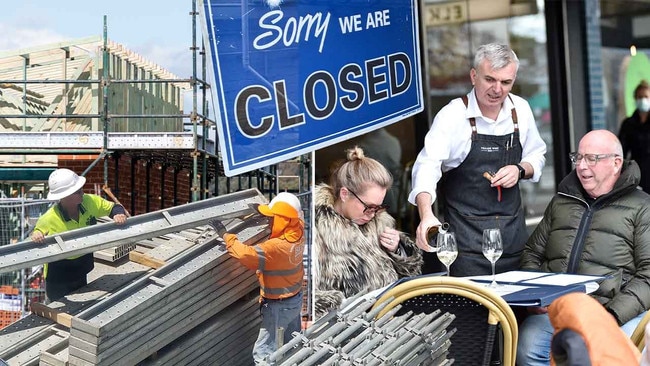ASIC figures reveal business failures have reached their highest level since 2015
Insolvencies have surged to their highest level since 2015 with retail and construction hardest hit. But while firms may think they have survived the worst, experts warn they are taking too long to face reality.

Business insolvencies in the September quarter surged to their highest level since 2015, according to the latest figures from the Australian Securities and Investments Commission, as fears for the construction, retail and hospitality sectors mount ahead of the critical holiday trading period.
ASIC data shows that 2486 businesses hit the wall in the three months to September, up 10 per cent from the previous quarter and 21 per cent higher than the corresponding period last year.
It’s the largest number of insolvencies reported in a single quarter since December 2015 when 2499 business collapses were reported.
Construction made up close to a third of all insolvencies in the September quarter, with 783 business failures, up 27 per cent from the June quarter.
It was followed by the accommodation and food services sector where administrations and liquidations were up 10 per cent to 340.
According to the ASIC figures, business failures in NSW made up 46 per cent of all failures in the September quarter, with its 1142 collapses up 20 per cent from the previous quarter.
It was followed by Victoria (610), Queensland (420), Western Australia (160), South Australia (83), the ACT (34), Tasmania (22) and Northern Territory (15).
Australian Restructuring Insolvency and Turnaround Association chief executive John Winter said that while the volume of insolvencies was moderating in many industries, construction, retail and hospitality stood out as problem areas.
“I think there’s going to be more pain to come in construction,” he said.
“I think the adjustment that building firms need to make isn’t yet finished and I think that is because a lot of them still have carry-over contracts and carry-over approaches to pricing that don’t give them the flexibility.
“They’re still struggling with the supply of labour, there’s still some hold-ups in terms of the inputs that you need for construction, and the reality is that there’s a lag between the worst point that those businesses face and when a lot of them finally face the reality that they can’t survive.
“So their worst trading conditions, for example, may have been six or nine months ago. They keep soldiering on and they keep racking up more debt and pushing the inevitable out and then they do fall over. So that’s why I don’t think we’ve seen the end of that cycle.”
Credit reporting agency CreditorWatch’s latest Business Risk Index also reveals that payment defaults between businesses are currently tracking 57 per cent higher than a year ago, in a sign an uptick in business failures could be on the horizon.
Businesses in the food and beverage services sector remain the most at risk of payment defaults (6.8 per cent), according to CreditorWatch data, followed by transport, postal and warehousing (4.5 per cent).

Mr Winter said the upcoming holiday season, typically the busiest time of the year for pubs, cafes and restaurants, could be make or break for many hospitality operators.
“What’s going to impact them the most is that discretionary spending is definitely being crunched by interest rate costs, by cost of living etc.,” he said.
“There is less for people to spend on the luxuries of life like going to a restaurant, and so people are likely to trim their sales during that period where hospitality generally makes its best money over that summer period.
“And so, if you’re in hospitality, you’re going to have to watch very carefully what your cash flow looks like and make some fairly defensive decisions to make sure you can get through this period of tight pockets.”
Liquidator Leigh Prior from Agile Business Advisory said the Australian Taxation Office’s aggressive approach to debt recovery was a large reason for the recent rise in insolvency activity.
“If you look at winding up applications (from the ATO), they went from zero a year ago and now it feels like they’re getting back to where they were in 2019,” he said.
“They (ATO) also have powers that let them report debts to credit reporting agencies, and they have started sending notices out to debtors saying that if they don’t bring their accounts up to date or commit to meeting payment arrangements, then they will report those entities to credit reporting agencies.
“That’s obviously a concern for those businesses because that identifies defaults the same way as defaults to trade suppliers and banks.”







To join the conversation, please log in. Don't have an account? Register
Join the conversation, you are commenting as Logout